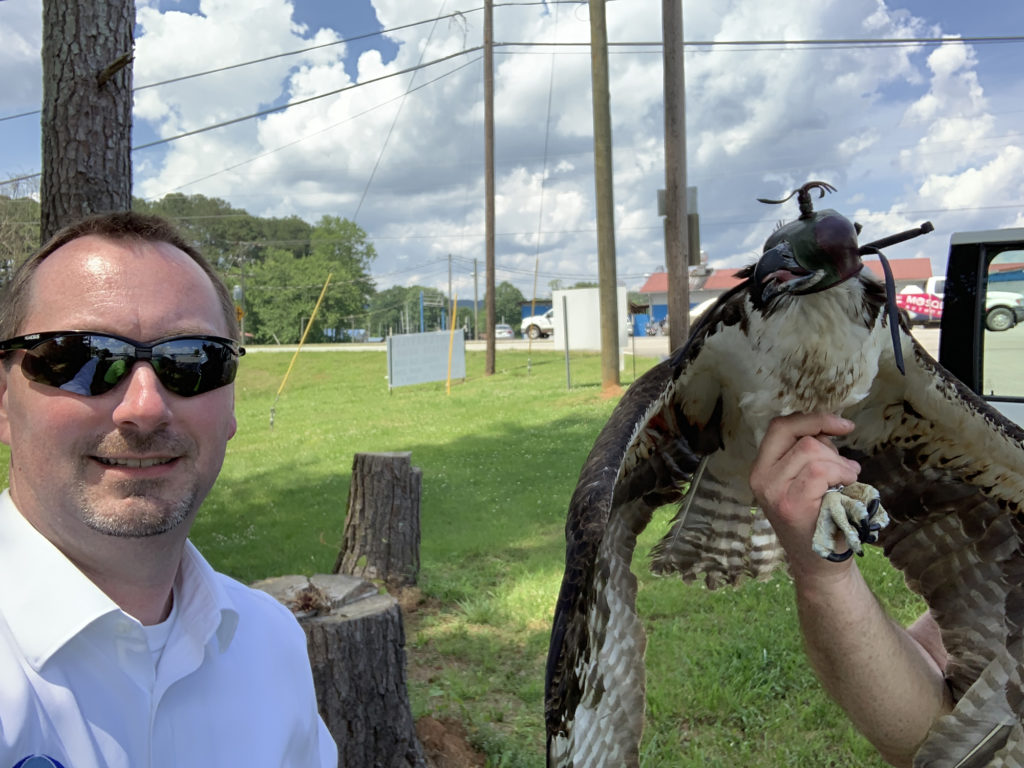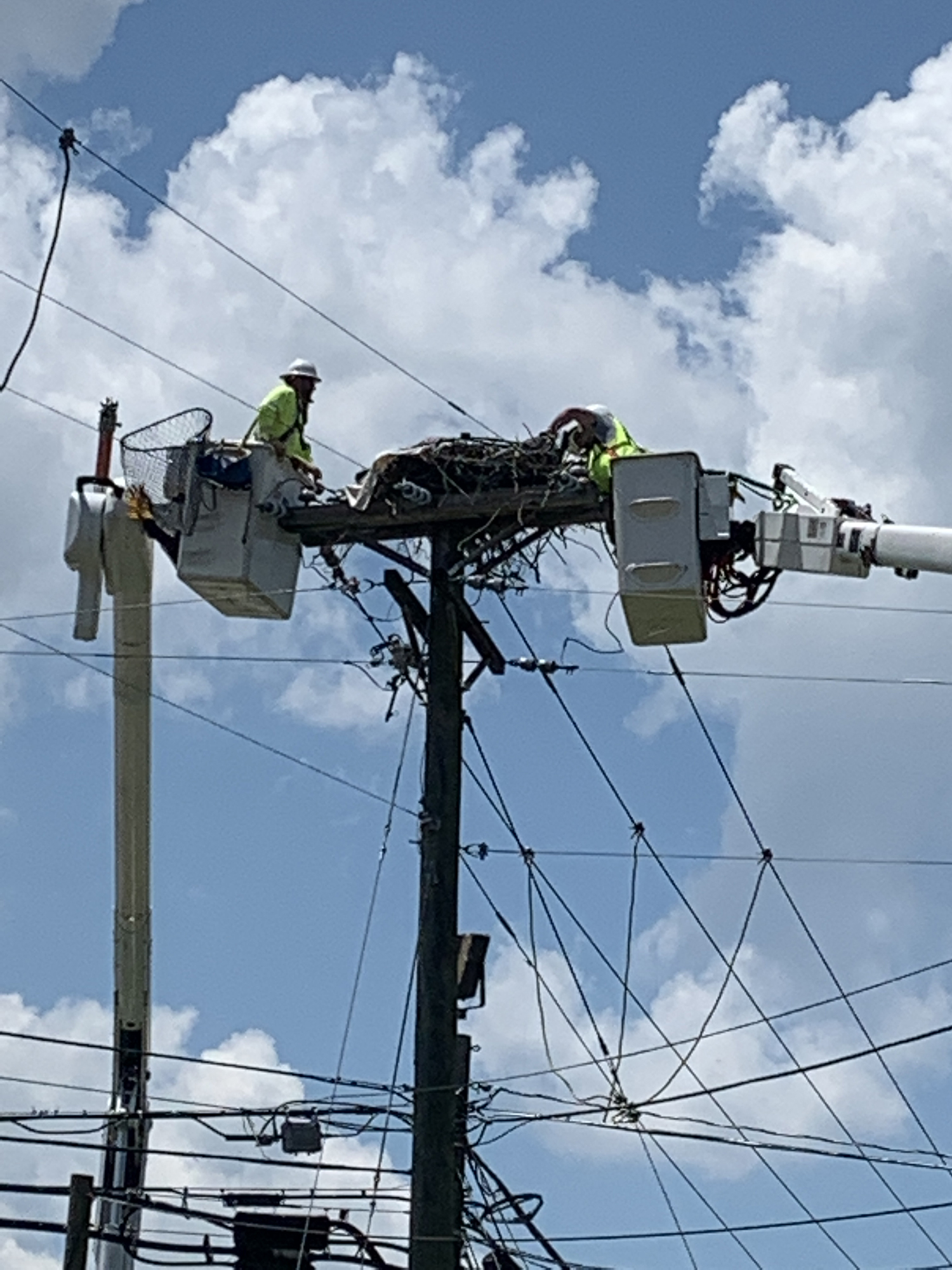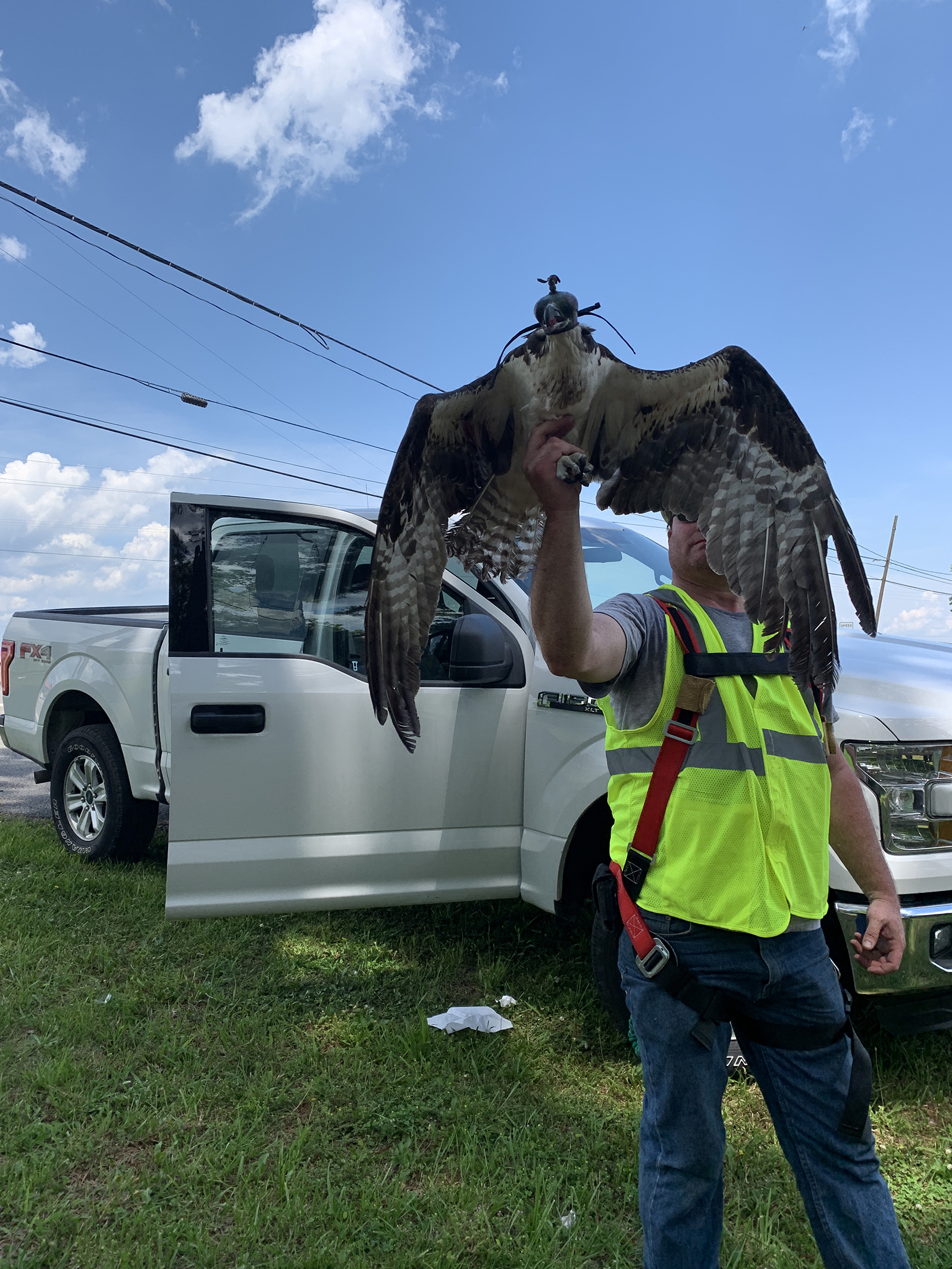
When a female osprey built a 4-foot-wide nest atop an Alabama power pole, Arab Electric Cooperative CEO Scott Spence knew he had a big problem.
The nest, built near live power lines in Guntersville, was a dangerous spot for the bird and her two chicks. And the ospreys and their massive twig home also threatened to disrupt power to some of the Arab, Alabama-based cooperative’s consumer-members.
“We wanted to do the right thing for the birds and our members, so we looked into what had to happen to move the nest,” Spence said. “It was quite the large project.”
Ospreys, a large, slender hawk that typically weighs 3 to 4 pounds and has a wingspan of more than 5 feet, are protected by the federal Migratory Bird Act. That law makes it illegal to capture the birds or move their nests without a federal permit.

It took the northeast Alabama cooperative more than a month of planning and consultation with wildlife biologists at the Tennessee Valley Authority, Mississippi State University and the U.S. Department of Agriculture to come up with a way to safely relocate the birds.
Spence put his team to work building a wood and metal perch for the birds’ nest on some land about 950 feet away from the power pole, on the opposite side of heavily traveled Highway 69 near Guntersville Lake.
On May 16, two cooperative linemen took USDA wildlife biologists up to the top of the power pole in bucket trucks to gently remove the chicks after they had captured the mother. The wildlife experts placed a leather falcon hood on the adult osprey’s head to keep her calm. They also fitted her with a tiny tracking device to monitor her future movements.
After the ospreys were removed, the cooperative crew used a small crane to carefully lower the nest. It was then placed in the back of a flatbed utility trailer and driven to the spot where a new wooden pole had been erected, complete with a flat metal platform at the top to support the nest.
To add to the pressure, the cooperative workers were being filmed by a local TV crew and watched by curious neighbors who had grown fond of the ospreys.
At one point, the female osprey appeared to be overheated, so Spence had her handler bring her inside his air-conditioned vehicle to transport her to the relocated nest.
“This giant bird of prey just got an Uber lift in my truck,” he said.

So far, Spence said, everything appears to be going well for the birds. Cooperative employees spotted a fish skin in the nest—evidence that the female osprey was bringing food to her chicks in their new home. To ensure that the ospreys don’t try to move back to the power pole, the cooperative team installed smaller plastic poles on top that make it difficult for birds to land there.
“I am relieved,” Spence said. “Sometimes, you take all the right steps and you don’t have the right outcome. I did worry about the possibility of her rejecting the new nest site. But it turned out just as we hoped. Everybody’s power stayed on. Everybody working on the project went home safe. The birds adapted to a new home. And we did it all at the lowest possible cost. I’m extremely proud of what our team was able to accomplish.”
He said cooperative employees will continue to keep an eye on the ospreys. “Every time somebody puts their boat in the water, they’re going to be looking up at that nest,” Spence said. “Everybody can see the fruits of their labor, and that’s kind of a cool thing.”
Erin Kelly is a staff writer at NRECA.